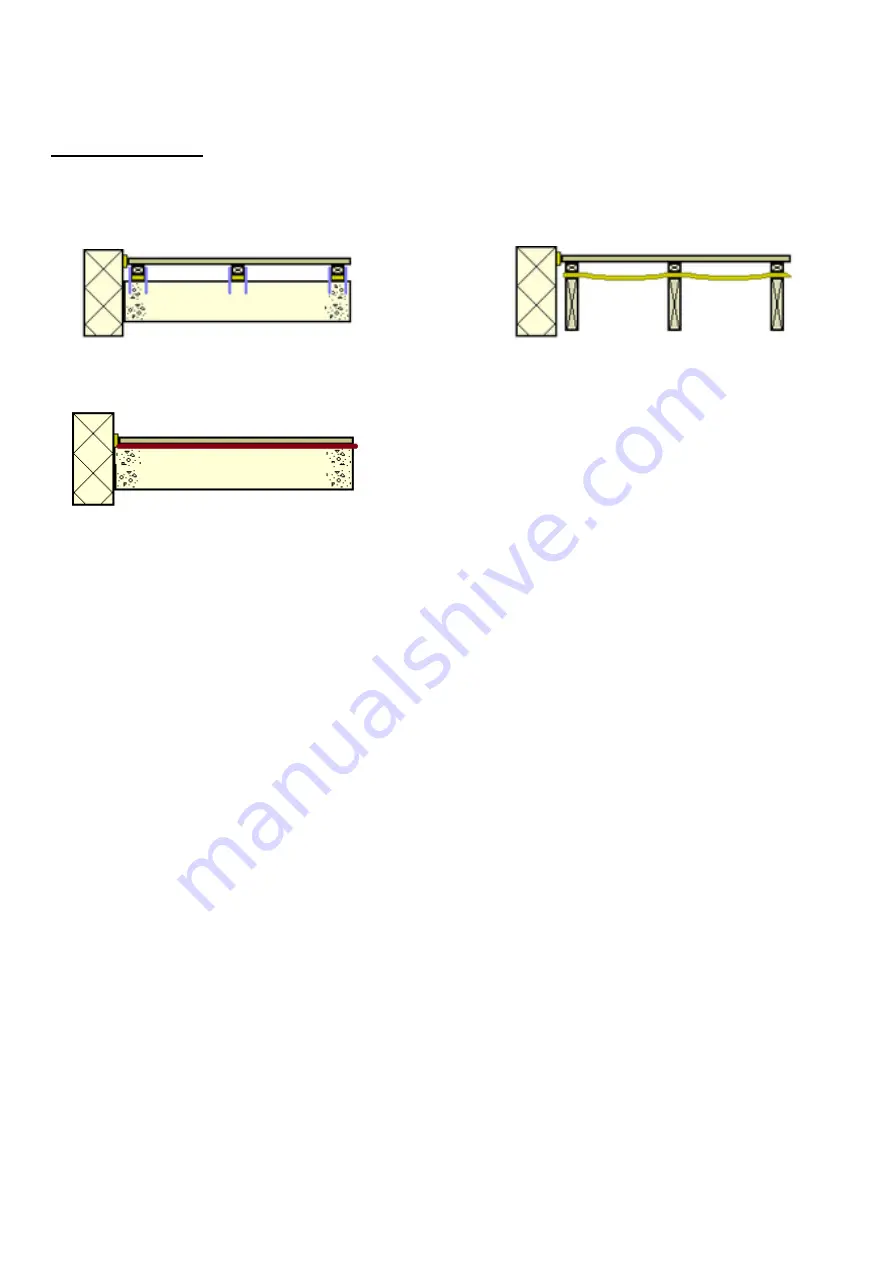
Abacus Pisces 069/Info.P 04/14v1a
9
1700 Pre Installation Requirements
Floating Floors
The definition covers a multitude of floor finishes. Typical examples below.
It is imperative that before any work is carried out that an understanding of the floor composition is carried
out.
1/
2/
Floating floor fixed to wood
Floating floor fixed to wood
supports over concrete
Joists
3/
Floating Floor on cushion material
Dependent upon the sub-structure a decision can be made as to whether it is feasible to install a powered
bath with chair. If the bath is a platform bath this is not an issue as there is little or no lateral load. The
issue arises when it is necessary to support the cantilever effect of the chair+patient.
Read below to address the floating floor that affects your installation:
1/
It is feasible to tackle this type of floor in two ways.
a)
Remove a section of the surface floor and ‘build up’ from the concrete sub-floor. This can be done by
creating a ‘tray’ and fill this using a concrete mix. Alternatively timber joists can be anchor bolted to the
concrete sub-floor to provide the needed support. The finish should come level with the surface floor.
b)
If the void is small it is acceptable to drive through with Rawl/Coach bolts. This may require a small section
of the surface floor being removed and material such as sheet wood inserted to fill the area.
2/
This type of void requires the surface floor removing and Noggins introduced to brace between the Joists.
Particular attention should be made on the area where the foot plate of the bath is to be sited.
3/
Dependent upon the void size it is usually acceptable to remove the material (often 100mm/4” polystyrene)
and back filling with concrete.
Under No Circumstances should fixing be made to the surface floor alone.
































